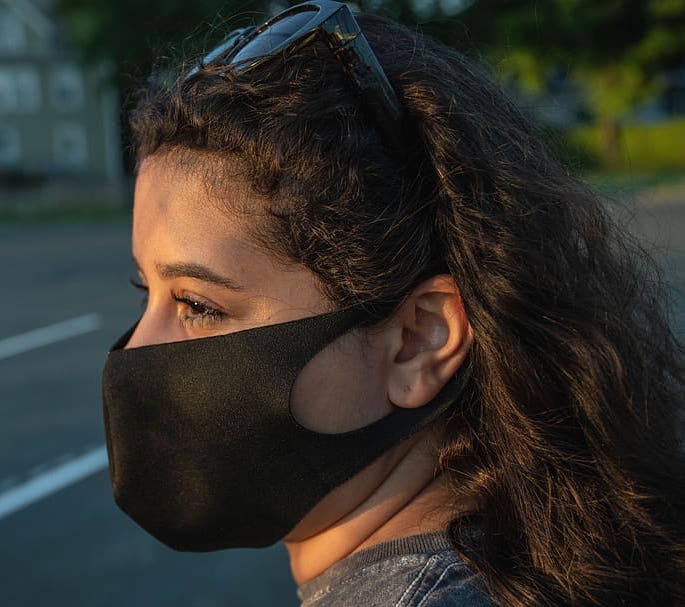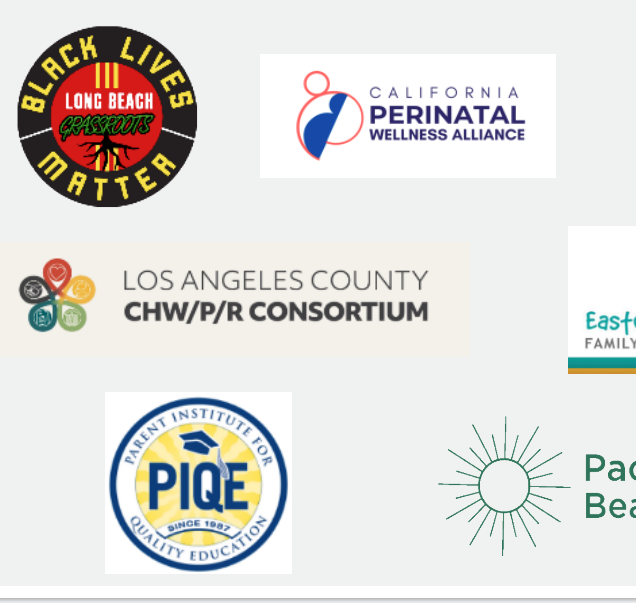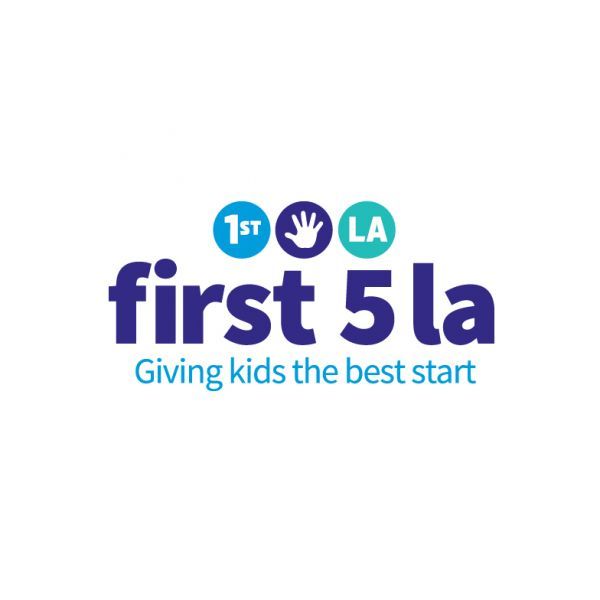About two months into the pandemic, after schools and day care centers had been shut down for a while, reporters began to look around and see that the closures were disproportionately felt most by mothers, especially mothers of color who are less likely to have benefits such as paid family leave. “The data is in, and the pandemic is having an outsized impact on women and moms, with women of color experiencing compounded harms due to structural racism,” wrote opinion contributor Kristin Rowe-Finkbeiner for The Hill.
Data shared by Business Insider pointed to a few contributing factors. About 70% of single parents are mothers, and without work benefits like paid leave, they must quit to care for children. Research shows that in heterosexual couples, mothers perform about 60% of child care, suggesting the expectation of child care lies with them. Bloomberg cited a survey which found that working mothers spent 65 hours per week on child care and household duties — 15 hours more per week than fathers.
While women have made great strides in the workforce since the 1970s, evidence shows that in times of employment uncertainty, heterosexual couples tend to revert to “traditional gender roles,” according to Jessica Calarco, an associate professor of sociology at Indiana University. And with women making less than men on average, in heterosexual couples, it will be the mother who gives up work in order to care for the children. Additionally, researchers at the Brookings Institute pointed out the many challenges that have long plagued working mothers, including exorbitantly costly child care and lack of paid family leave.
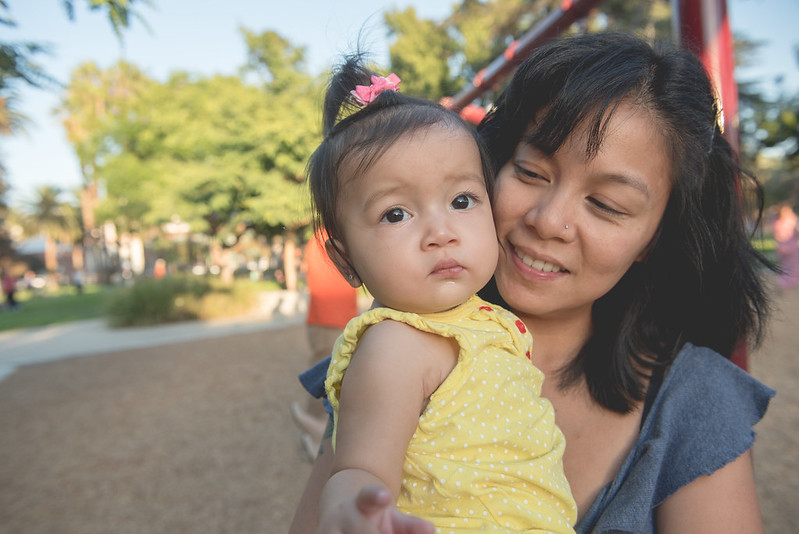
Given these preconditions, reporters predicted a mass exodus of women from the workforce if accessible child care and in-person school did not come back online. San Francisco-based writer Anna Nordberg wrote, “What does feminism look like without child care? It’s not pretty,” while Washington Post journalist Amanda Becker stated, “The pandemic upended child care. It could be devastating for women.”
While the early predictions may have been based on speculation and anecdotal evidence, as new data came in, the predictions began to manifest. “While 61 percent of men over the age of 20 were employed in May, less than half of women were,” stated POLITICO. The New York Times reported that the female unemployment rate had reached double digits for the first time since 1948, prompting C. Nicole Mason, president and chief executive of the Institute for Women’s Policy Research, to dub the phenomenon as a “shecession.”
For those women who are able to keep their jobs, balancing child care and work is creating unprecedented pressure. In an op-ed for TIME, Sen. Tammy Duckworth wrote, “With moms trying to fit 48 hours of work into 24-hour days and the next month’s rent always seeming to be due, we can’t ignore the crises facing working parents any longer.” Some mothers have even faced discrimination for having children as part of their work-from-home life, further ramping up the pressure. One mother reportedly lost her job after a supervisor complained that her children were noisy during meetings.
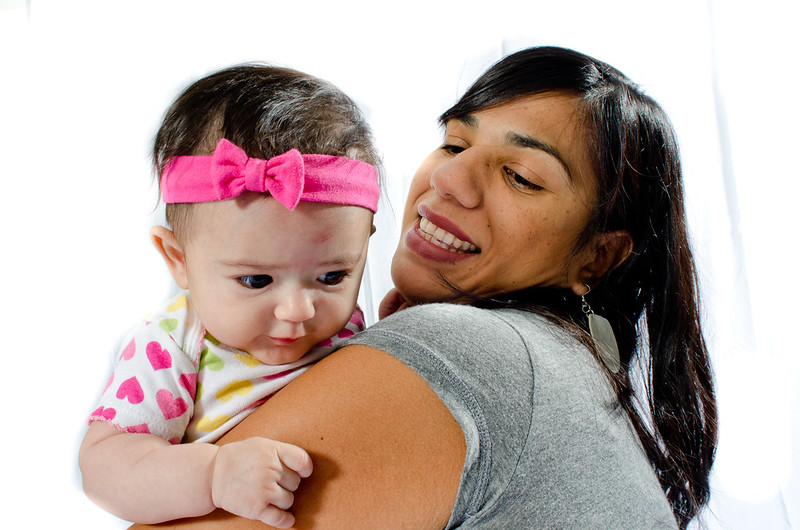 Given the pressure and the 2020-2021 school year beginning remotely in many states, the shecession has only grown. According to a report from the National Women’s Law Center (NWLC) released at the beginning of October, 865,000 American women — four times the number of men — dropped out of the workforce between August and September. “Never have we seen the exodus of women from the labor force that we have seen this year,” writes Emily Martin, vice president for Education & Workplace Justice at the NWLC, in an op-ed for The Hill.
Given the pressure and the 2020-2021 school year beginning remotely in many states, the shecession has only grown. According to a report from the National Women’s Law Center (NWLC) released at the beginning of October, 865,000 American women — four times the number of men — dropped out of the workforce between August and September. “Never have we seen the exodus of women from the labor force that we have seen this year,” writes Emily Martin, vice president for Education & Workplace Justice at the NWLC, in an op-ed for The Hill.
It’s important to note that the dwindling number of women in the workforce is not due exclusively to child care needs — the economic crisis resulted in the elimination of many jobs typically held by women, such as child care providers, teachers, retail workers and nurses.
The stark October numbers stoked a frenzy of media coverage, with some calling for solutions to the shecession. Nicole Mason, president of the Institute for Women’s Policy Research, said in an interview with MarketWatch that she’s in favor of making child care a public good so that fewer families have to question whether their child is safe and if they can afford to work because of the cost of child care. “Child care needs to be accessible, cost-effective and high quality for families across all income levels,” said Mason about ways to bring women back into the workforce
The pandemic’s impact on mothers in the workforce is an active and unfolding story, being lived by thousands of American women as of this writing. To help our readers understand the many facets of this issue and to support solutions that would retain gender equality in the workforce, we have compiled the library of links below. The stories are organized by month to show the progressively worsening nature of the issue.
May
San Francisco Chronicle: What does feminism look like without child care? It’s not pretty
I was bone tired. The first week of sheltering in place had been a blur of logging into school Zoom meetings, slapping together turkey sandwiches, unloading the dishwasher, taking my kids on long walks so we didn’t all turn on each other, and cooking dinner — sometimes (it felt) all at the same time. (Nordberg, 5/1/20)
The Hill: Pandemic Mother’s Day: The crisis and the road ahead
The data is in and the pandemic is having an outsized impact on women and moms, with women of color experiencing compounded harms due to structural racism. (Rowe-Finkbeiner, 5/10/20)
Vox: The economic crisis exacerbates how much we undervalue women’s work
Women and people of color were already at a disadvantage — then the pandemic hit. (Stewart, 5/11/20)
The Washington Post: The pandemic upended child care. It could be devastating for working women.
Evie Ebert and her husband are in survival mode when it comes to juggling working from home with caring for their 4- and 1-year-old children. (Becker, 5/20/20)
CALMatters: Pandemic steals most from immigrant working women
Researchers at the UC Merced Community and Labor Center find non-citizen women have experienced the deepest job losses. The study is an early signal of how the coronavirus recession is widening California’s economic inequities. (Botts, 5/21/20)
Bloomberg: State Reopening Plans Collide With Shuttered Child-Care Centers
Without day care, people—mostly women—can’t get back to work. (Moore & Banjo, 5/22/20)
June
Motherly: Forcing parents to return to the office without childcare will hurt mothers the most
The pandemic disrupted every facet of everyday life and it highlighted how a work culture that fails to recognize the humanity of employees makes humanity vulnerable. (Marcoux, 6/11/20)
Forbes: The Role Of Childcare In Helping Women Reclaim Pre-COVID Workplace Gains
The number of college-educated women in the workforce was equal to men. More women were employed than ever before. And nearly 70% of women in the workforce had children. (Welson-Rossman, 6/15/20)
POLITICO: A lack of child care is keeping women on unemployment rolls
Women’s participation in the workforce — which is closely tied to access to child care — has dropped at a faster clip than men’s since the early spring. (Cassella & Mueller, 6/26/20)
July
Moms.com: Study Shows That Without Childcare 40% Of Working Moms Are Working Even More
Daycares being closed down and unable to reopen to full capacity, it means that 40% of moms everywhere are working even more. (Cooper, 7/4/20)
The New York Times: Woman Says She Was Fired Because Her Children Disrupted Her Work Calls
Drisana Rios of San Diego said in a lawsuit that she lost her job with an insurance brokerage firm after a supervisor complained that her children were being noisy during meetings. (Waller, 7/8/20)
Fortune: In April, 6% of parents expected to quit their jobs because of COVID-19. Now that’s up to 27%
A new survey by parenting benefits platform Cleo comes to a stark conclusion: Things have gotten much worse for working parents since April. (Hinchliffe, 7/14/20)
Business Insider: The pandemic is set to shutter 30% of US childcare centers — and it could prove catastrophic for the careers of American women
In the wake of the coronavirus pandemic, many childcare centers and schools have closed their doors, forcing parents to teach and care for their kids while also juggling work. (Ward, 7/30/20)
August
TIME: Sen. Tammy Duckworth: America’s Moms Are Running on Empty. We Need to Do More to Support Them.
I may be a trained helicopter pilot and a United States Senator, but one of the hardest tasks I’ve ever taken on is trying to teach my five-year-old how to add three plus five and how to write the letter K. (Duckworth, 8/1/20)
Business Insider: If the Senate doesn’t bail out the childcare industry, economists see women leaving the workforce en masse
The House recently passed two bills that would provide a combined $100 billion in direct child care funding over the next 5 years, but it’s unclear if either will pass the Republican-led Senate. (Ward, 8/3/20)
USA Today: Coronavirus pandemic creates America’s first female recession amid child care, unemployment woes
Her husband was the hero, saving lives. She was the terrible mom – “the worst mom ever,” her sons told her – and the terrible worker. (Carrazana, 8/4/20)
CNN Business: Childcare challenges force some working moms to put their careers on hold
Single parents, parents with young children, and parents who can’t work from home are the groups most at risk of quitting their jobs due to a lack of childcare, according to research from Goldman Sachs. (Whistle, 8/7/20)
Romper: 2020: The School Year We Made Women Choose Between Work & Care
As school districts across the country announce decisions about school reopenings, ongoing uncertainty is likely to drive many women — particularly single moms — out of the workforce unless we make supporting women and child care a central facet of our economic rebuilding plan. (Bolis, 8/11/20)
TIME: America Has Been Failing Mothers for a Long Time. The Pandemic Made It Clear What Needs to Happen
My mother, who homeschooled eight children, saw that column as a mark of her valor. Not only did it hang on our wall at home, I grew up hearing it quoted in church sermons on Mother’s Day. (Lenz, 8/11/20)
Seattle Times: COVID-19 pits full-time parenting against full-time work, and women are the hardest hit
Casey Osborn-Hinman describes it as “this secret underground world”: the bind facing women across the country as they navigate the impossible task of managing full-time child care while holding down full-time jobs in the midst of the COVID-19 pandemic. (Burbank, 8/15/20)
NPR: 1 In 5 Child Care Jobs Were Lost Since Pandemic Started. Women Are Affected Most
Of the many sectors of the American economy slammed by the coronavirus pandemic, the businesses and individuals who provide child care to an estimated 12 million children under age 5 are among the hardest hit. (Welna, 8/19/20)
MarketWatch: ‘Mommy will forever be stressed and vulnerable to career scarring’: COVID-19 forced working mothers to take time off work — rather than fathers
Working mothers took two paths when COVID-19 shut down schools, both less than ideal. (Albrecht, 8/20/20)
Marketplace: Women three times more likely than men to not work during pandemic because of child care
In the past few recessions, it was men who were disproportionately affected when jobs like manufacturing and construction took a blow. But COVID-19 has affected industries that tend to hire women. (Garsd, 8/21/20)
CNBC: How unequal paid parental leave for men and women can reinforce gender inequality at Fortune 500 firms
A new study released by Ball State University finds that many Fortune 500 firms offer far more paid leave to mothers than they do fathers. (Connley, 8/26/20)
USA Today: COVID-19: Dithering in Congress will set women, children — and our GDP — back a generation
Women and children are hurting in the pandemic. When they are forced to step back from work and education, America’s GDP will take the hit. (Goldman & Psaki, 8/27/20)
MSNBC: Inside the SheCession: Childcare workers feel squeeze as Covid costs rise, enrollment shrinks
NBC’s Ali Vitali reports on new strain on the childcare industry as parents and the people who work in facilities alike fret how to care for children. (8/30/20)
USA Today: Paternity leave is ignored by corporate America — and that’s a problem for women
Corporate America has a gender problem when it comes to parental leave, with a new study finding that Fortune 500 companies are far likelier to provide paid leave to mothers than fathers. (Picchi, 8/31/20)
Forbes: How This Company Is Helping Women Balance Work With Health And Motherhood
For working mothers, searching for equilibrium between career and family can become contentious and frustrating, especially when the workplace fails to cooperate with the needs of new mothers. (Haider 8/31/20)
September
CBS News: Research increasingly points to a retreat of working moms from the labor force
Angela Wynn had just launched her own project management business, hitting a career stride after years of struggle that began with earning an undergraduate degree as a single mother. (9/5/20)
LAist: With Day Cares Shut And School Online, LA’s Working Moms Are Carrying The Child Care Load
The recipient was the principal of Holy Trinity Elementary School in Atwater Village, where she taught fourth and fifth grade. (Dale, 9/17/20)
The New York Times: As School Begins, Mothers Working Retail Jobs Feel Extra Burden
A number of women working in retail say they are being forced to choose between keeping their jobs and making sure their children can keep up with remote learning. (Maheshwari & Corkery, 9/21/20)
MarketWatch: ‘A body blow to gender equality’: Child-care centers struggle to reopen, while others may raise prices to survive
‘It has the potential to set back women not just in 2020, but for years to come.’ (Jagannathan, 9/24/20)
The New York Times: Pandemic Will ‘Take Our Women 10 Years Back’ in the Workplace
Improvements in gender equality in the workplace may be another casualty of the coronavirus, as women find their place in the work force more at risk. (Taub, 9/26/20)
NPR: ‘This Is Too Much’: Working Moms Are Reaching The Breaking Point During The Pandemic
Youli Lee is proud of the years she worked for the U.S. government, prosecuting cybercrime in some of the world’s darkest places. These days, she’s the one hiding out — mostly from her three children, ages 8, 11, and 13. (Hsu, 9/29/20)
Good Morning America: Childcare crisis during pandemic will set women back in the workplace, experts say
When the coronavirus pandemic closed schools and daycare centers in Colorado earlier this year, Tina Carroll faced a no-win choice: Keep her job at a local university, which required her to work in-person, or quit her career to stay home with her 6-year-old son. (Kindelan, 9/30/20)
October
New America: Child Care Investment Could Close the Growing Gender Gap in Work Hours
The U.S. is in the midst of a child care crisis that some experts say will affect women’s employment for years to come. (Swenson, 10/1/20)
CNBC: More than 860,000 women dropped out of the labor force in September, according to new report
As the economy slowly tries to recover during the coronavirus pandemic, new data shows that women are still being disproportionately impacted by today’s crisis. (Connley, 10/2/20)
Also featured in MarketPlace (Ho, 10/2/20)
Working Mother: What Will the Future of Working Motherhood Look Like?
The global health crisis has shown that work, school and childcare systems aren’t supportive enough. Now experts see this as an opportunity for change. (Pfeffer, 10/1/20)
Moms.com: As If Women Didn’t Have It Hard Enough At Work, Now Childcare Makes It Harder
Many think that child care is the individual responsibility of each family, but the reality is that this excludes many women from the workforce. (Nuss-Warren, 10/3/20)
Good Morning America: Working mothers on the edge
For the past month, Curious City has been talking with families, students and teachers from around the Chicago region to get a sense of what this school year has been like since COVID-19 forced many schools to go remote and others to adopt a whole new set of rules and protocols. (10/4/20)
Capitol Weekly: Equal access to maternal, prenatal care crucial for mothers
With the outbreak of the COVID-19 pandemic, expectant mothers of color in California now face two battles at once: potential exposure to a deadly virus, and long-standing inadequate access to the best prenatal and maternal healthcare. (Jones, 10/5/20)
MarketWatch: The pandemic is causing women to drop out of the workforce — here’s what it will take to get them back
‘It’s upsetting to see these changes happen so fast over the past six months.’ (Buchwald, 10/9/20)
The Washington Post: Women are bearing the brunt of the economic crisis. They must lead our recovery plans.
The Great Recession hit male-dominated professions hard. This time around, women are bearing the brunt of the economic crisis. They must be at the forefront of our recovery. (Raimondo & Henry, 10/8/20)
Fortune: Sheryl Sandberg: Senior-level women are leaving the workforce. If businesses don’t act, we’ll lose our best leaders
According to the 2020 Women in the Workplace report by LeanIn.Org and McKinsey & Company, one in four women in corporate America are now considering downshifting their jobs or leaving the workforce. That number holds steady even for the country’s senior-most women leaders. (Sandberg & Thomas, 10/9/20)
Forbes: The Undiscussed Problem About September’s Exodus Of Women In The Workforce
With consulting firm McKinsey & Company, Cofounder of Lean In Sheryl Sandberg released this year’s Women in the Workplace report. The report cites this exodus threatens to erase all the gains women have made in management and senior leadership roles. (Carter, 10/11/20)
Today: Why COVID-19 is disproportionately hurting working moms
Coronavirus job losses are hitting women harder than men and leading to impossible dilemmas for many mothers and caregivers. (Campoamor, 10/13/20)
The Hill: COVID-19 and the disappearance of millions of working women
If it wasn’t clear before this month’s job numbers, it is now: the pandemic is turning back the clock for women. (Martin, 10/14/20)
Brookings: Why has COVID-19 been especially harmful for working women?
After decades of struggle, the 19th Amendment to the Constitution gave women in the United States the right to vote. This hard-won right foretold the increasing presence of women not only in the voting booth, but also in the workplace. (Bateman & Ross, 10/14/20)
The New York Times: Mothers Are the ‘Shock Absorbers’ of Our Society
The pandemic is forcing moms out of work at great financial, societal and marital costs. (Grose, 10/14/20)
NBC News: We’re just beginning to understand the extent of Covid-19’s feminist nightmare
Covid-19 is driving women out of work and back into the role of homemaker. (Petersen, 10/15/20)
NBC News: What it will take for women to survive — and thrive — during this ‘shecession’
We now know, in no uncertain terms, what women need to achieve economic security: well-paying, stable jobs and comprehensive childcare solutions. (Soto & Castillo, 10/16/20)
TIME: ‘If We Had a Panic Button, We’d be Hitting it.’ Women Are Exiting the Labor Force En Masse—And That’s Bad For Everyone
The United States is in the midst of a crushing economic recession, COVID-19 infection rates are spiking, and thousands of schools and childcare facilities have yet to reopen in-person classrooms. (Vesoulis, 10/17/20)
NPR: Even The Most Successful Women Pay A Big Price In Pandemic
That’s when the coronavirus pandemic hit. It put the brakes on four years of hard work as an associate professor. And now she wonders if her promotion will happen as she had hoped for next year. (Hsu, 10/20/20)
USA Today: The pandemic is driving moms out of the workforce, COVID-19 child care crisis persists
Like other parents, Diaz left her job to take care of a child after schools abruptly shut down due to the coronavirus pandemic. She is eager to return, but with remote learning still in place this fall, that has not been an option. (Adely, 10/22/20)
WBUR: ‘Shecession’: The Pandemic’s Impact On Women In The Workforce
The ‘shecession.’ More women are losing their jobs than men. What’s the long-term impact on families? (10/22/20)
The New Yorker: Why the Pandemic Is Forcing Women Out of the Workforce
The unemployment crisis has been compounded by closures of schools and day-care centers, and the resulting caregiving burdens have fallen disproportionately on women. (Chotiner, 10/23/20)
NPR: ‘My Family Needs Me’: Latinas Drop Out Of Workforce At Alarming Rates
Throughout her years as a working mother climbing the corporate ladder, Farida Mercedes tried to be home for dinner with her kids. But until recently, she never imagined staying home full time. (Horsley, 10/27/20)
